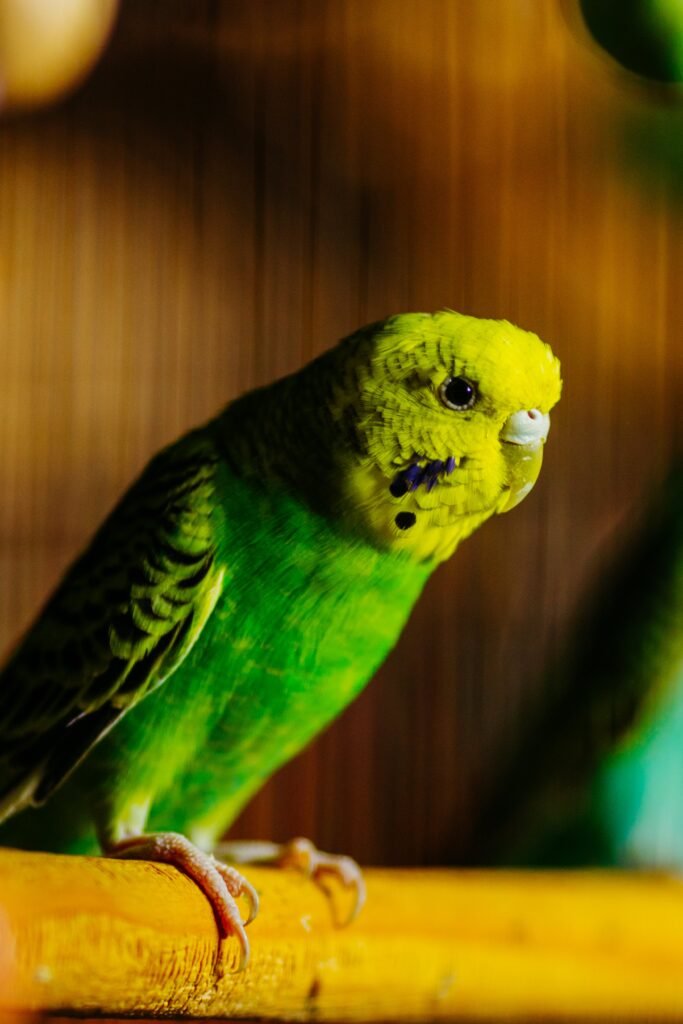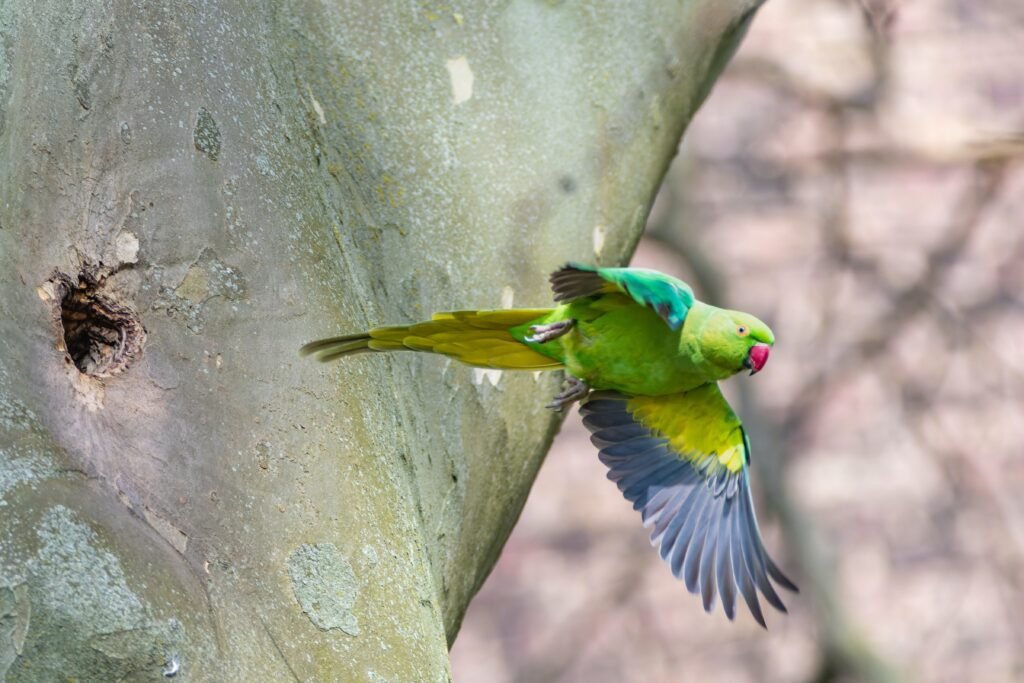
Budgies and parakeets are often used interchangeably to refer to the same type of bird. However, the terms need to be clearer, as they can also describe different species of birds. This article will explore the similarities and differences between budgies and parakeets, shedding light on this common source of confusion among bird enthusiasts.
Understanding Budgies
Budgies, also known as budgerigars or shell parakeets, are small, colorful birds native to Australia. They are parrot family members known for their playful and social nature. Budgies are among the most popular pet birds worldwide due to their charming personalities and ability to mimic human speech.
Physical Characteristics of Budgies
Regarding physical characteristics, budgies have a unique and distinctive appearance. Here are some key features:
- Size: Budgies, including their tails, are typically around 7 inches (18 cm) long. Despite their small size, they are full of energy and vitality.
- Coloration: In the wild, budgies have predominantly green feathers with black and yellow markings on their heads and wings. However, captive-bred budgies come in various colors thanks to selective breeding. You can find them in shades of blue, yellow, white, and even combinations of these colors. This vibrant array of hues makes them a delight to behold.
- Lifespan: On average, budgies live for about 7 to 10 years. However, they can live up to 15 years or more with proper care, bringing joy and companionship for a significant part of your life.
Behavior and Personality Traits
Budgies are not just visually appealing; they also have fascinating behavior and personality traits. Here’s what you need to know:
- Sociability: Budgies are highly social birds that thrive on interaction with their human companions. They enjoy being part of a flock, whether it consists of other budgies or their human owners. Providing them with ample socialization and companionship is essential for their well-being.
- Intelligence: While budgies may not be as famous for their intelligence as other parrot species, they are still quite clever. With patience and consistent training, budgies can be taught to perform various activities and even mimic simple words or phrases. Their ability to learn tricks adds extra fun for you and your feathered friend.
- Playfulness: Budgies are active and playful birds that require mental and physical stimulation. Providing them with toys, perches, and opportunities to fly can help keep them happily entertained. Their playful nature will bring joy and laughter to your home as they explore their surroundings and engage in various activities.
Parakeets: A Broad Term
The term parakeet is more general and can describe a wide range of small—to medium-sized parrots with long-tail feathers. It encompasses several species and is not limited to a specific geographic region. Due to this broad definition, it is essential to understand the context in which the term parakeet is used.
Different Types of Parakeets
- Indian Ringneck Parakeets: These parakeets are native to Africa and Asia and are known for their vibrant green plumage and distinctive neck rings. They are larger than budgies, measuring about 16-18 inches (40-46 cm) in length. Indian Ringneck Parakeets are highly intelligent birds with excellent talking abilities. Their larger size and striking appearance make them popular for bird enthusiasts who desire a slightly bigger pet.
- Monk Parakeets: Also known as Quaker parakeets, these birds are native to South America. They are medium-sized parakeets, typically measuring around 11 inches (28 cm). Monk parakeets are known for their lively personalities and distinctive facial markings. Their playful and inquisitive nature adds liveliness to any environment they inhabit.
- Australian Parakeets: This category includes various parakeet species native to Australia, such as the elegant parakeet, rock parakeet, and Bourke’s parakeet. While these parakeets may resemble budgies in size and coloration, they often have specific physical characteristics that differentiate them. For example, the elegant parakeet is known for its graceful flight patterns and striking plumage, while the rock parakeet is recognized for its adaptability to arid habitats.
Differentiating Budgies and Parakeets
To differentiate budgies from other parakeets, it is important to consider their specific characteristics:
- Origin: Budgies are native to Australia, while other parakeet species may originate from different parts of the world. This geographical distinction is crucial in understanding the diverse range of parakeets.
- Size: Budgies are smaller than most other parakeet species, measuring around 7 inches (18 cm) in length. This compact size makes them an excellent choice for those who prefer a more manageable bird.
- Color Range: While wild budgies are predominantly green, captive-bred budgies come in various colors. Other parakeet species may exhibit different colorations, making them visually distinct from budgies. The kaleidoscope of colors seen in budgies is a testament to the marvels of selective breeding.
- Social Behavior: Budgies are highly social birds that thrive on companionship. They are known for their ability to bond closely with their owners and even mimic human speech. This unique characteristic sets them apart from other parakeet species and contributes to their popularity as beloved pets.
Conclusion
Budgies and parakeets can refer to the same bird species in some contexts, specifically when discussing the popular pet bird species native to Australia. However, parakeet is more general and can encompass a broader range of species from different regions. By understanding the specific characteristics and context in which these terms are used, bird enthusiasts can avoid confusion and better appreciate the unique qualities of each bird species.
FAQ
1. Are budgies and parakeets the same?
Budgies and parakeets are often used interchangeably to refer to the same type of bird, specifically when discussing the popular pet bird species native to Australia.
2. What are the physical characteristics of budgies?
Budgies are typically around 7 inches (18 cm) long and have predominantly green feathers with black and yellow markings on their heads and wings. However, captive-bred budgies come in various colors, including shades of blue, yellow, white, and combinations of these colors. They have an average lifespan of 7 to 10 years but can live up to 15 or more with proper care.
3. How do budgies differ from other parakeets?
Budgies differ from other parakeets in their origin, size, color range, and social behavior. They are native to Australia, smaller (around 7 inches), and come in a wide range of colors. Budgies are highly social birds that bond closely with their owners and can mimic human speech.
4. What are some examples of different types of parakeets?
Some examples of different types of parakeets include Indian Ringneck Parakeets, Monk Parakeets (Quaker parakeets), and Australian Parakeets (elegant parakeets, rock parakeets, Bourke’s parakeets). These parakeets vary in size, appearance, and geographical origin.




